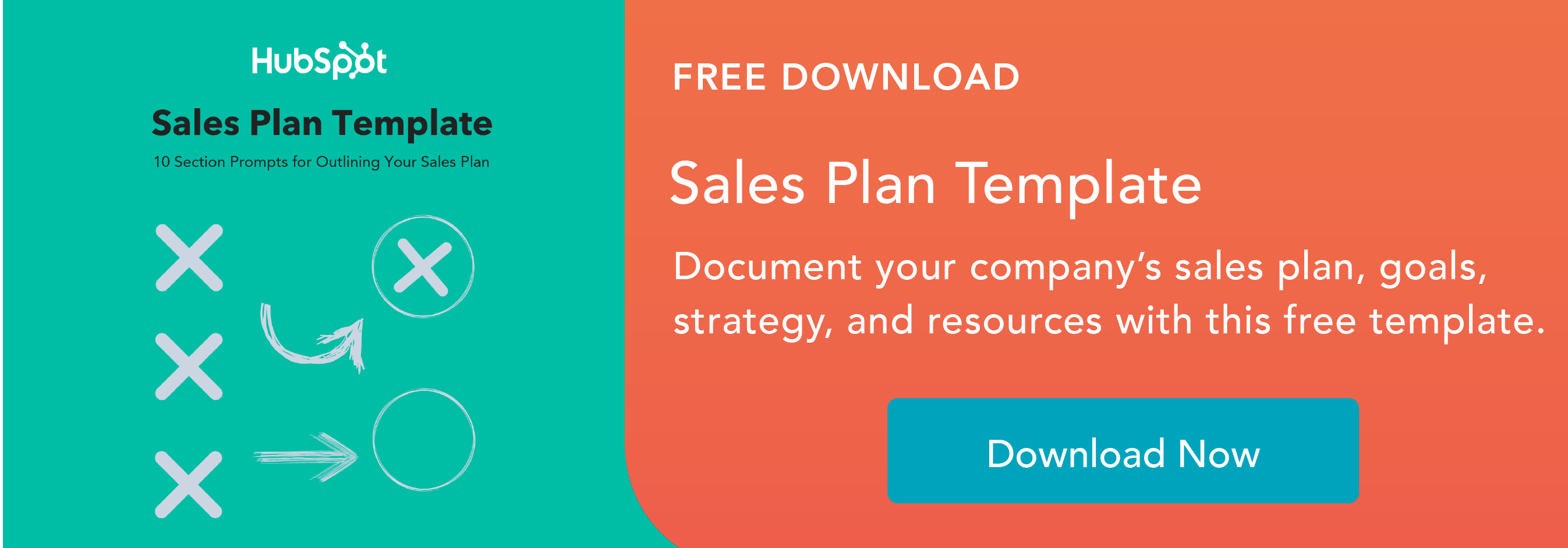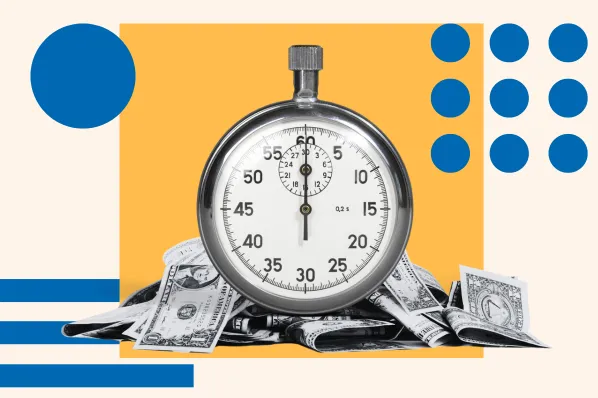How do you go from putting out fires to running like a well-oiled machine? Well, the trick might be as simple as prioritizing quality over quantity.
If you’re rolling your eyes at your screen right now, just hear us out. For eons, salespeople have been told to make more calls, send more emails, and take more meetings. But being busy doesn’t leave time for thinking strategically, nurturing customer relationships, or making sure your team has everything they need — especially if your company is growing at lightning speed.
Read on to find out how Teamwork.com increased sales efficiency by 50% when they ditched "more is better" in favor of "better is better."
Teamwork.com's Sales Story
Who are you and what is Teamwork.com all about?
My name is Beau Brooks and I’m the Global VP of Sales at Teamwork.com, a project management tool for client work. It’s an all-in-one platform that helps agencies and client teams deliver projects on time and on budget in one centralized place.
What’s the backstory? How did Teamwork.com get its start?
The story is pretty cool. In 2007, our founders started a web agency, building websites and other solutions for clients. As their agency started to grow, they struggled to keep up with the project management side of things. They started looking for software that would help manage the client side of the business, but the product they were looking for didn’t exist. So, they decided to build one.
The tool they built ended up being such a huge success that the founders pivoted the agency to focus on the platform.
How has the company grown since then?
The original product is now part of a comprehensive project management platform. But, that OG product still exists today as Teamwork.com (formally known as "Teamwork Projects"). As the platform grew, so did the company. Today, Teamwork.com has over 350 employees and 13 offices in over six countries. And in the last 3 years, we’ve undergone a ton of growth and change.
What was the sales approach like in the early stages of the business?
In the early stages, our founders were doing it all. Including the selling. But they were product guys, so the sales strategy was very product centric. The downside of that is that when all you’re doing is selling customers on a product or feature, you’re not building deep relationships or helping customers understand the functional and emotional benefits of the platform.
Eventually, they hired sales leaders from enterprise backgrounds, and their approach was to give people a little training, throw them in, and start selling. They figured people would swim, but instead, they were drowning. It’s hard to stay on track when you’re not sure how to manage daily tasks and it’s even harder to turn prospects into customers when you don't fully understand how or why the product you’re selling helps solve their problems and needs.
Walk us through what happened when the company started experiencing rapid growth?
Well, when we went from a company of 30 to over 300 people, the sales team just couldn’t keep up with the volume of leads. We were caught in that old "More, more, more. Sell, sell, sell" kind of mentality and we got stuck in a vicious cycle where we would ramp up the closing business, get it closed, and then have to start all over again every month. It was unscalable.
We had to keep hiring more people, but we weren‘t getting the most out of the people we had, so we were basically throwing away profit by not optimizing productivity. Along with that, we weren’t using a consultative approach. That meant we weren't closing as many deals as we could have, because we were focusing on pushing features rather than connecting with prospects.
Those things, combined with the fact that our homegrown sales tools didn’t provide automation or visibility into the pipeline for a company of our size, meant we were constantly putting out fires. It was really exhausting.
How did you move out of the firefighting stage and into a more strategic phase?
To achieve scalable, long-term growth, I knew that we had to stop focusing on quantity of leads and start focusing on quality — but not just the quality of our customer relationships. We also needed to focus on the quality of our process, our strategy, even the way we train our reps.
We took strides like building automation in the deal flow and guiding reps through the necessary steps to progress customers forward. We leveraged AI resources to predict lead and deal outcomes, using the data from past deals to inform more refined, accurate forecasting and using insights about our best customers to set up a more effective qualification process.
We started spending extra time creating relevant sales content that was specific to our prospects, instead of enrolling contacts in sequences with generic emails. We created a new compensation plan for BDRs, where they only receive bonuses for the quality leads they generate. And we build a fresh quoting process with approval steps to ensure accurate pricing, discount management and create strong alignment with our Deal Desk team.
Having access to HubSpot and Sales Hub gave us the automation, visibility, and features we needed to focus on improving the way we were approaching and doing things. With more time and better processes in place, the entire sales team can now work more strategically and efficiently than ever before.
How did you get the team on board?
Before we rolled out the platform to the entire company, sales leadership selected several reps to serve as HubSpot Champions. The reps were given the pre-training and coaching they needed to champion the rollout across the org.
It was helpful to create a sales sandbox that allowed reps to test drive the tool, practice running our sales process, without being afraid to make mistakes. Sales Ops also held daily stand-ups with the team to review the implementation process and discuss any challenges that were popping up. It was really powerful to have internal voices praising the platform and it was a great opportunity for more peer-to-peer interaction and career development.
We were quick to connect deals to our chat through automation which triggered real time celebration announcements for closed won deals across the entire team. You can be sure the team was excited to start closing deals and getting recognized across the organization!
Walk us through the evolution of your sales process.
The ideal process is clearly defined, repeatable and designed to turn more prospects into customers. But with the focus shifting to quality, the process needed to help us identify our most valuable prospects, pinpoint inefficiencies, optimize our teams, and nurture customer relationships. Sales Hub gave us full visibility into our sales pipeline, which meant we could track customer interactions, identify valuable opportunities, and pinpoint inefficiencies so we could figure out how to start improving our process.
We looked at how many SQLs a salesperson needs to be effective in a given month, and how many actions they need to take on those leads to be effective. We tracked the average number of touchpoints, when we needed to take action, and how many interactions were needed to close a deal.
Having access to that data in HubSpot made it possible for us to approach prospecting as a science and optimize our sales process to make it clear, repeatable, and scalable — which has helped increase the sales team’s efficiency by 50%.
How did you optimize your sales team?
Before, we were hiring people just to meet the growing number of leads. And it wasn’t beneficial or sustainable. So, instead of putting more butts in seats, spending more time doing tedious admin tasks, and putting more effort into every possible prospect, we started focusing on doing more with less — by making the most of the team we already had.
Sales Hub helped us optimize the team by giving us visibility into how our current reps were functioning and determining if they were selling effectively. Once the team was optimized, we were able to determine if we needed more people. When we did need to hire, we were able to bring in the right people and provide them with effective onboarding.
Since the key to efficient rep ramp up is consistency, we started customizing our sales software to require certain inputs when creating or updating records. For example, when new opportunities are created, reps have to fill in required fields like "company size" — to help establish strong practices, right out of the gate.
We also set up reusable playbooks and email sequences for common processes and customer interactions. The effect has been huge. In the first six months, alone we were able to reduce the average deal length by 10%.
Tell us about your enablement process. How has that helped the team?
We’ve come a long way from the "throw them in and see if they swim" days. Even the strongest salesperson is going to struggle if they don’t have access to great training or guidance. Once we had access to HubSpot we had the time and resources to make enablement a priority — during onboarding and after.
Now, our managers use Sales Hub to check in and see what’s working for the team, and step in if something isn’t. It’s been great to build shared pipeline dashboards across the team that have created common understanding and expectations at all levels and help managers laser in to help with coaching exactly where it’s needed. Having insight into performance means they can provide reps with personalized guidance and relevant feedback to help our people grow and succeed.
The robust nature of the forecasting tool in Hubspot has upped our game. Our weekly team forecasting meetings are efficient and surface the right deals to discuss. Managers can easily track changes in team forecast and coach reps with consistently pushed deals. We now have highly visible forecasting that’s available all the way to the board level.
Since the shift, what’s helped you deepen customer relationships?
I find that people don't care about what your product can do until they know how much you care about them. And when you’re a salesperson, the key to doing that is understanding your customers’ problems and how you can help solve them.
In the past, we didn’t have the bandwidth or tools to do that. Sales Hub changed that. We used playbooks to build a series of triggers and checks into our system that tracks customers’ pain points and guide reps in competitive deal situations. We have also added product playbooks in Hubspot making it very fast for reps to access needed information. Our team is able to review those issues and adjust their selling strategy to provide each customer with solutions tailored to their needs. It’s helped us build deeper relationships, increase our average selling price by 18% and amp up our win rate by 11%.
How has the team benefitted from the less-is-more philosophy?
Ditching the ‘more is more’ mentality has fundamentally changed the game for our reps and managers. It’s helped us increase productivity, efficiency, and profitability — fast. These days, our team is operating like surgeons instead of firefighters — and the high-quality visibility, automation and features that Sales Hub has given us has played a large role in that.
Any advice for other rapidly-growing sales teams?
Evolve your strategy and sales process to focus on scalability, efficiency, and long term growth. Optimize your team. Prioritize training and discovery and seek out the right tools to amp up sales and empower your team. And don’t forget to find fun ways to celebrate team wins!
Productivity

.jpg)


![How to Improve Sales Performance of Reps or Teams [Data & Expert Tips]](https://53.fs1.hubspotusercontent-na1.net/hubfs/53/improve-sales-team-performance%20(1).jpg)
![How to Avoid a Summer Slowdown in Sales [Data + Tips]](https://53.fs1.hubspotusercontent-na1.net/hubfs/53/summer-slowdown.png)


.png)

![What Is the Four-Day Workweek [and Can it Really Boost Sales?]](https://53.fs1.hubspotusercontent-na1.net/hubfs/53/4%20Day%20(1).jpg)


![The Most and Least Productive Days of the Week Revealed [SlideShare]](https://53.fs1.hubspotusercontent-na1.net/hubfs/53/most-productive-day-of-week.jpeg)